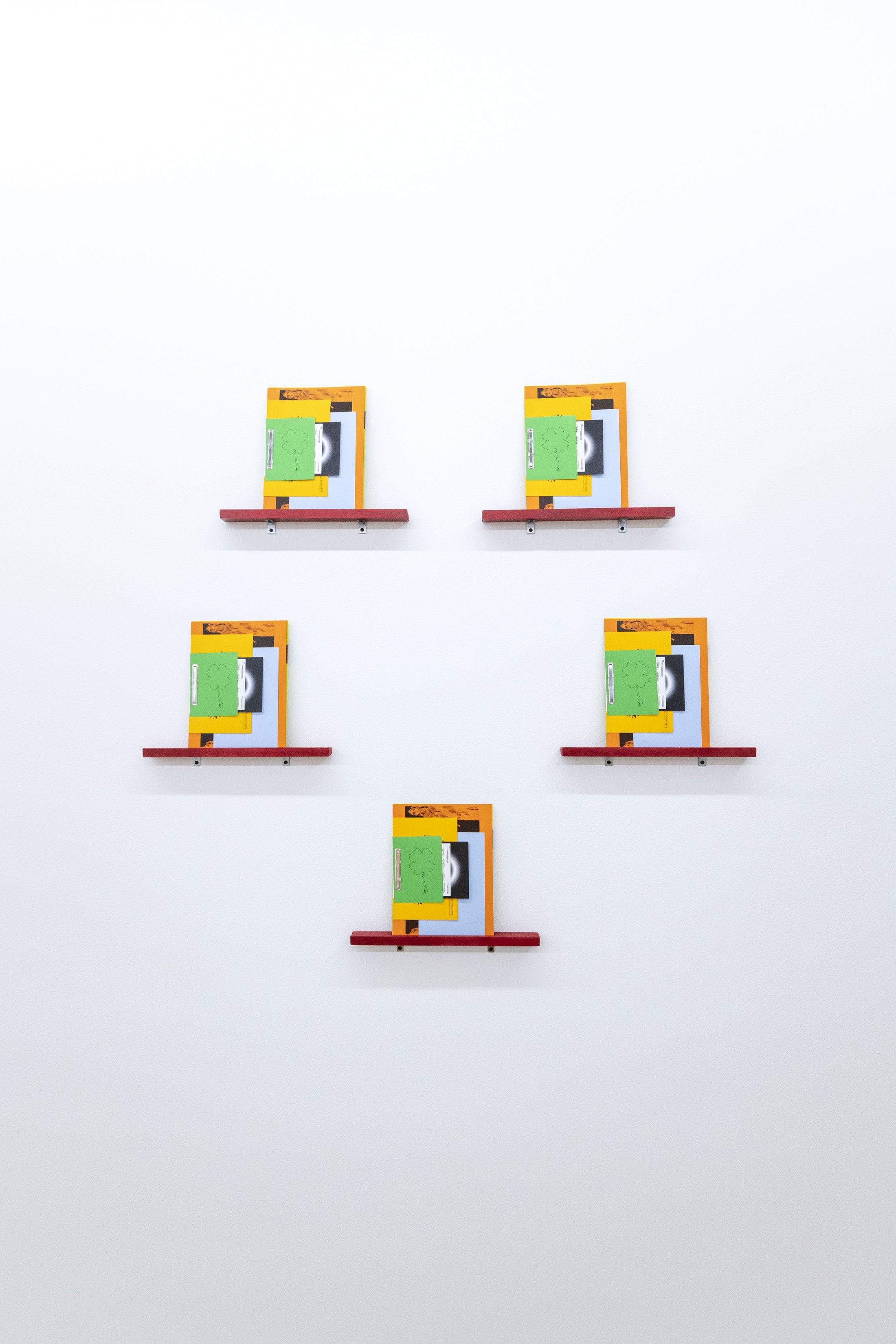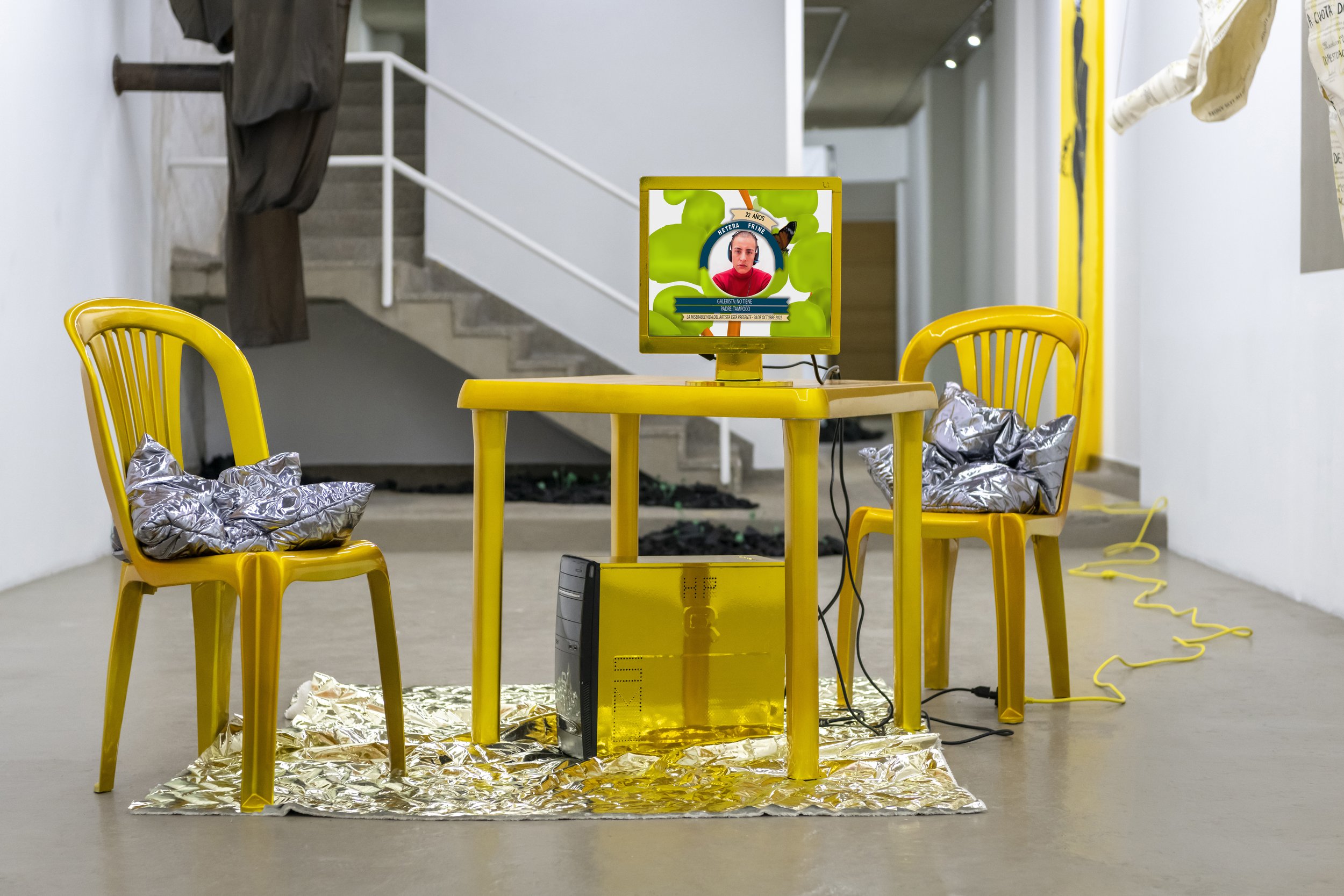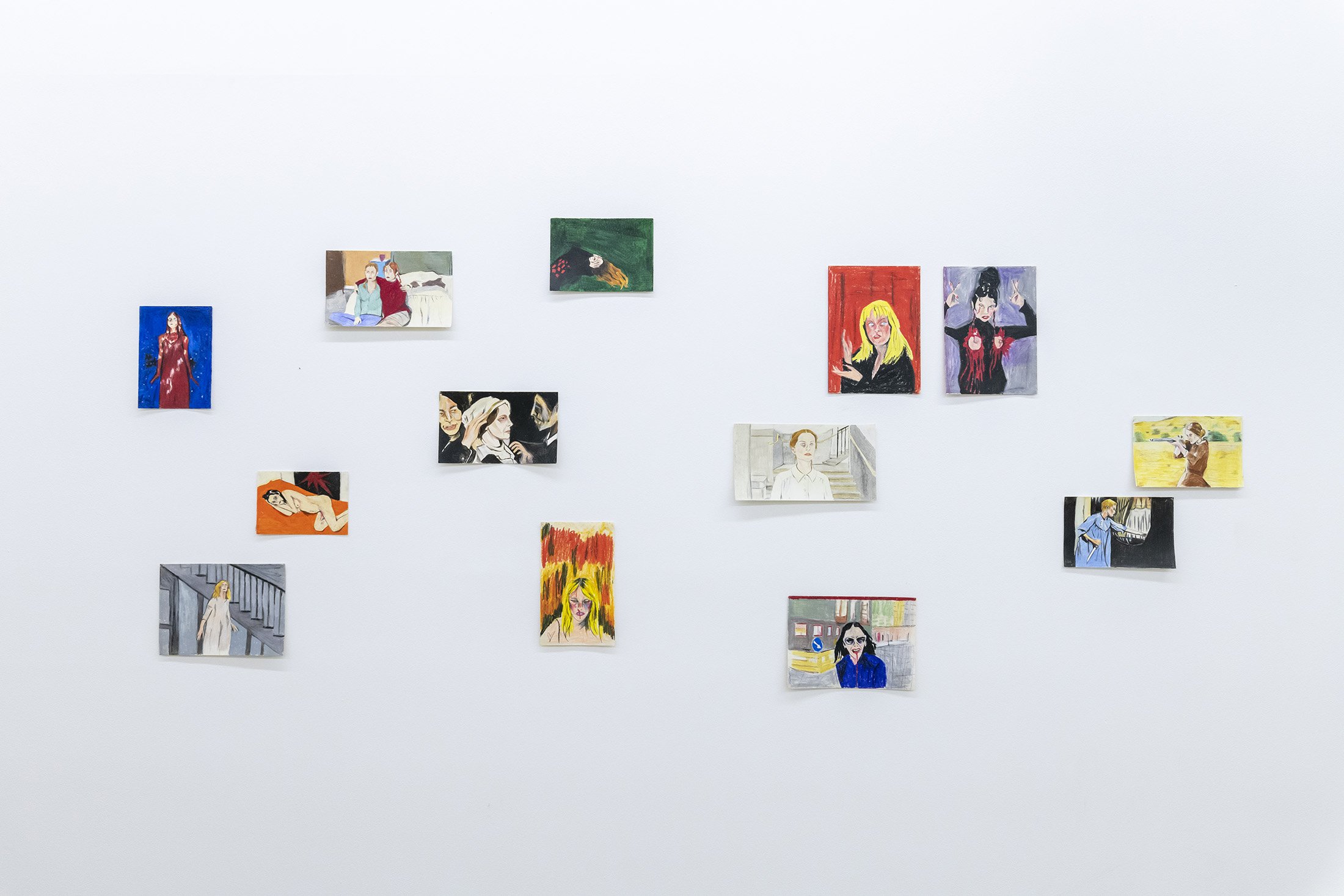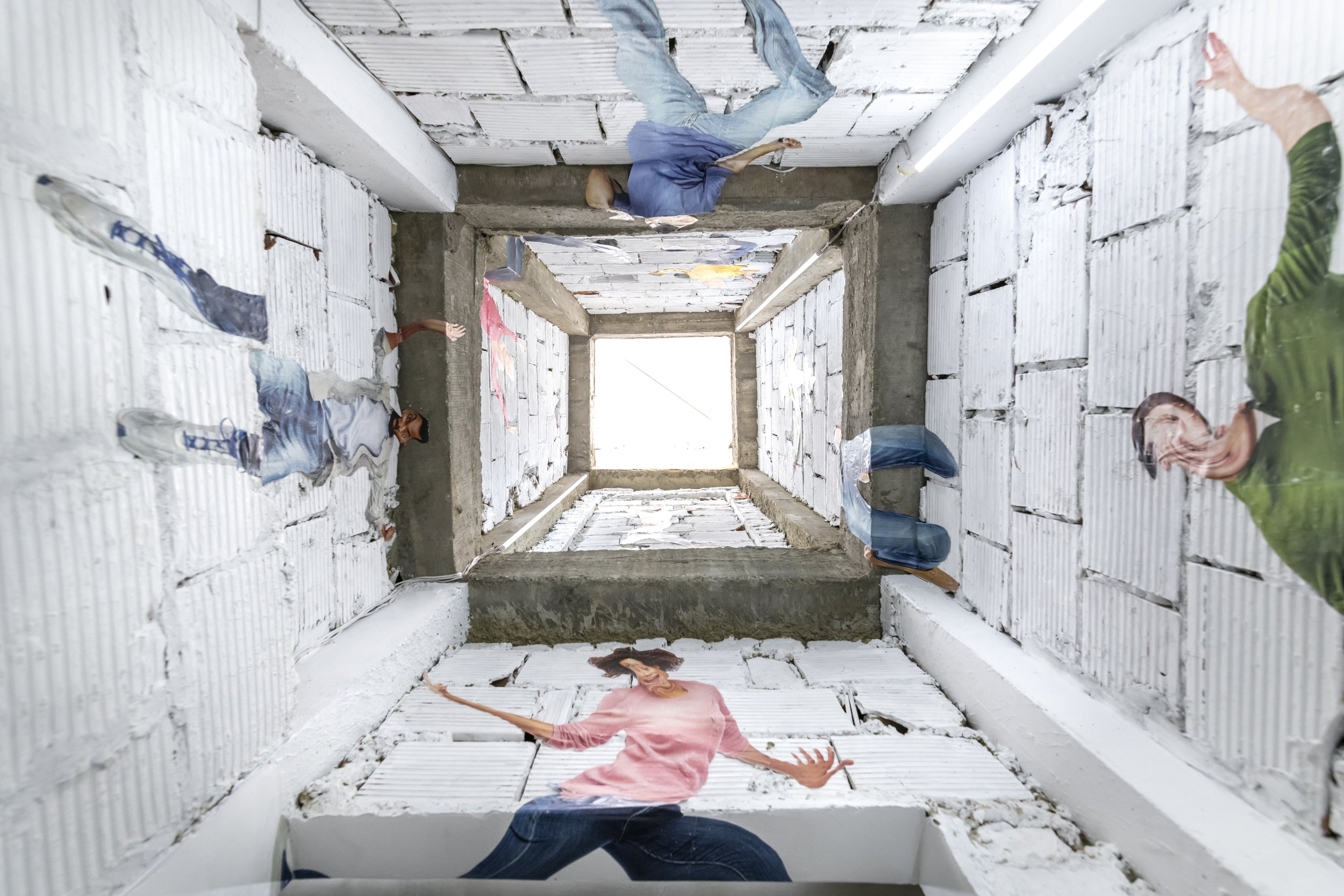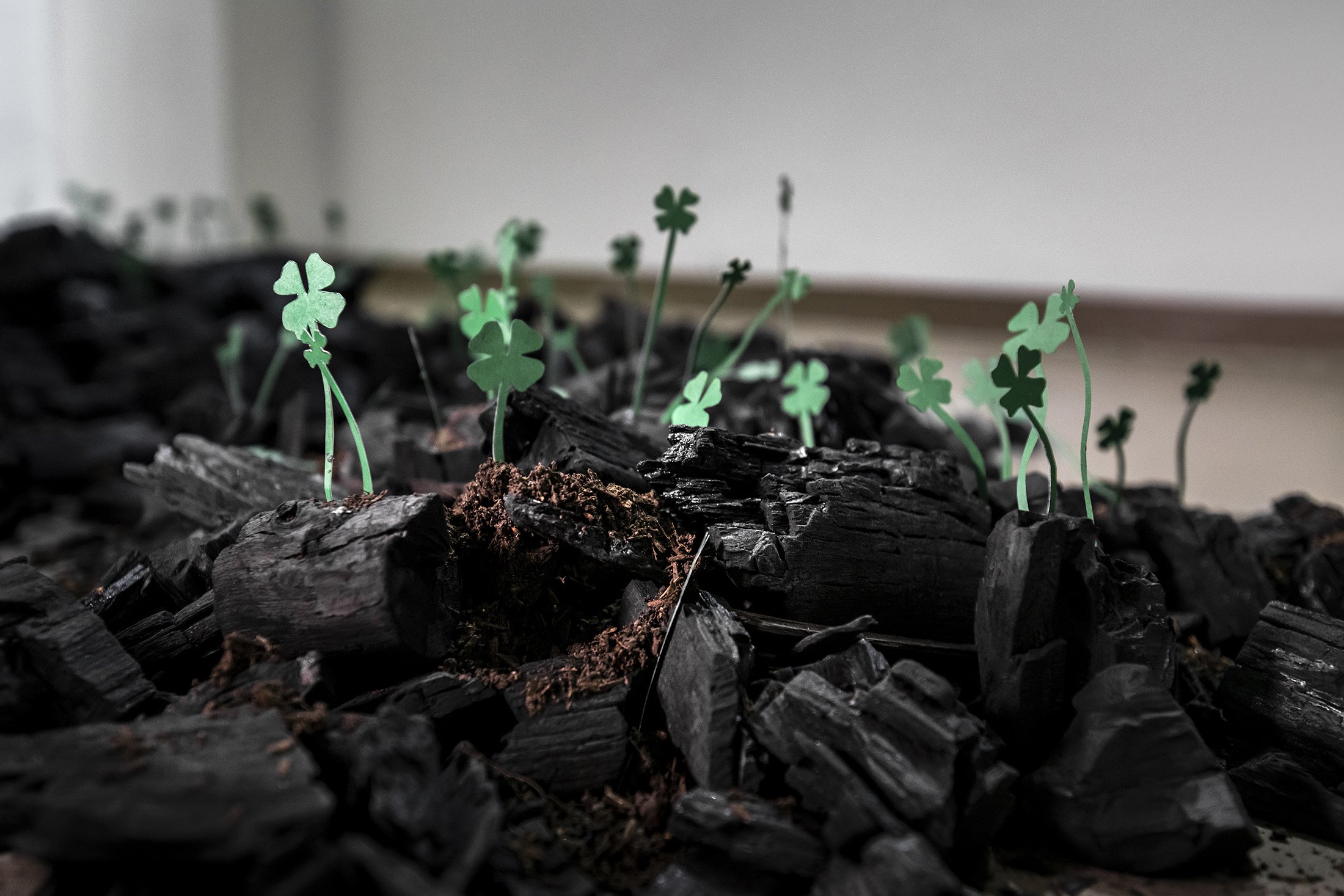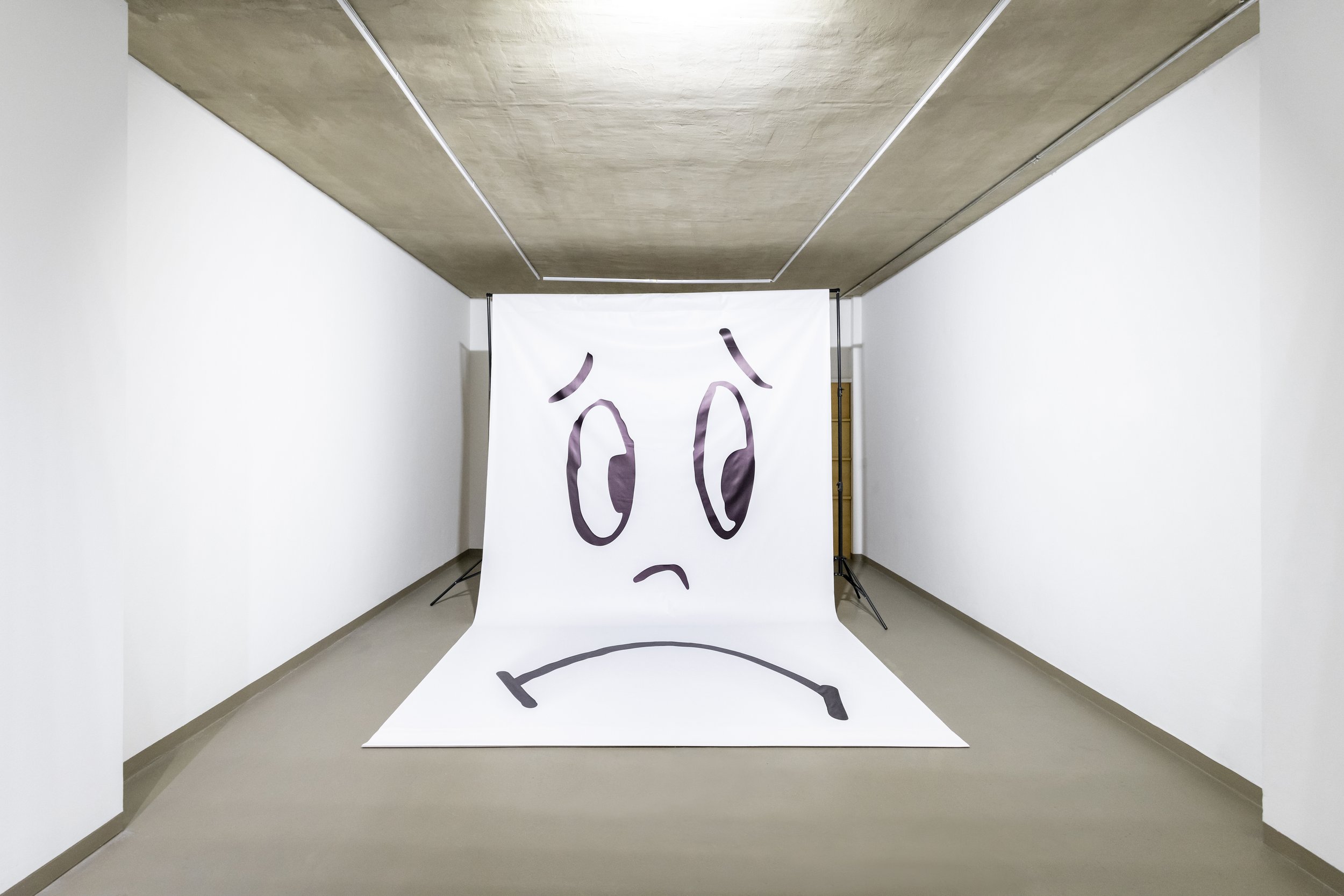Pensar en los niños
Hetera Friné (b. 2000), Raquel Moreno (b. 1999), Iván Navarro (b. 1984), Linda Pongutá (b. 1989), Juan Sebastián Rosillo (b. 1995), Villamil & Villamil (b.1991) (b.1994)
Curaduría por William Contreras Alfonso
1
Reflexionando sobre la idea de sanidad mental en nuestra historia, varios teóricos concuerdan que muchos aspectos relacionados con la salud y la felicidad tienen que ver con el higienismo, la actitud prudente de una moralidad acoplada a la productividad. Esto generaría una sociedad limpia y ordenada que es creyente, pulcra, aporta al prójimo y es feliz, y en contraposición, quien reniega del trabajo, mira con recelo los usos sociales más aceptados, o no presenta rasgos de suficiencia con su contexto, corre el riesgo de ser tratado como un loco, mirado de reojo por rebelde, encasillado como pervertido o desacreditado como un triste perdedor. “¿Y es que ya nadie quiere pensar en los niños?” es un llamado de auxilio que aparece una y otra vez en el imaginario popular, enunciado con palabras distintas pero con intenciones idénticas de salvaguardar el progreso contenido en la generación entrante. Es ese pavor a un futuro incierto que vendrá con la corrupción del desorden, del rompimiento de la familia como eje de la funcionalidad social, del irrespeto a la ley en pro del respeto mismo, de los cambios en la noción de cuerpo e identidad que se tornan experimentales y difusos, en la responsabilidad por lo que le hacemos a recursos y a seres que quedaron atravesados en la carrera por el buen vivir.
Hay que tener en cuenta que el término “Juventud” es un término administrativo más que cronológico, acoplando a conveniencia distintos valores específicos de tiempo, energía, agencia personal, poder adquisitivo, belleza y expectativa de vida. Los partidos políticos, las grandes corporaciones, las asociaciones religiosas y demás inversionistas de peso siempre están pensando en los niños, pero la pregunta aguanta otra vuelta de tuerca, y también vale la pena reflexionar sobre el para qué están pensando en ellos, cuál es el trasfondo de su marcado interés.
Juventud divino tesoro.
2
La juventud se acerca siempre a la idea generalizada de vanguardia, excentricidad e innovación, haciéndola muy apreciada en los círculos de economías creativas e industria intelectual. Por este motivo las universidades son tan buenos negocios, y también por esto el mercado del arte vivió por un tiempo una suerte de fiebre del oro con el recién graduado, apreciando su ímpetu, su calidad como inversión y su corta base financiera. El caso del artista joven merece particular atención por su estado paradójico, siendo al mismo tiempo envestido como un sujeto decisivo para el cambio, pero en una situación de urgencia e inestabilidad que lo encaminan por caminos estrechos dictados desde las políticas culturales rigentes. Sin embargo, parece ser que la brecha entre estas dos identidades ha sido un terreno para apropiar las expectativas, utilizándolas a favor a través de la autoexotización o el sarcasmo.
Volviendo a la excentricidad, suele ser infantilizada como una rebeldía inane, como un gusto por llamar la atención que divierte por su rareza. Lo anticonvencional es visto muchas veces como una desadaptación y no como un ejercicio de libertad, desde una condescendencia que busca valores instantáneos, sin matices ni contrastes. Sin embargo, el poder de desbalance que guarda en su interior es contundente, pues puede entronar y validar desacoples a las reglas, antihéroes como agentes de cambio, promover un sentido de alerta frente a lo pensado como normal.
Lo que puede parecer tonto, indigno, feo, terrorífico o desagradable en un principio, guarda el germen de la insurgencia, la vitalidad desconcierto, y el rompimiento del hastío.
3
Alguna vez un colega profesor dijo que deberían ser los estudiantes quienes pongan la nota en clase. Explicándose, diría que con la edad las confusiones se acrecientan y los conocimientos se desactualizan, haciendo del profesor el menos idóneo para calificar el progreso de nadie.
Que confusión. Ciegos guiando a otros ciegos
¿Cómo podremos lograr la vida que creemos merecer?
Tal vez delineándola de a pocos, una y otra vez, lo que sea necesario Creyendo que hay futuro.
______________________________________________________________________
Curated by William Contreras Alfonso
1
When thinking about the idea of mental health in our history, a number of theorists agree that many aspects related to health and happiness are connected with hygienics, the prudent attitude of a morality coupled with productivity. This would generate a clean and ordered society where the individual is a believer, scrubbed, contributes to his fellow human being, and is happy; as opposed to somebody who grumbles about work, is wary of the more accepted social customs, or is not up to performing in their context, at risk of being treated like a mad person, suspected of being a rebel, pegged as a pervert or discredited as a sad loser. “Doesn’t anybody want to think about the children anymore?” is a cry for help that appears once and again in the popular imaginary, uttered using different words but with the identical intention of safeguarding the progress contained in the rising generation. It is this panic about an uncertain future that will come with the corruption of disorder, the break-up of the family as the axis of social functionality, disrespect for laws about respect itself, changes in the idea of the body and identity which have become experimental and diffuse, responsibility for what we do to resources and beings that lie at cross-purposes with the rush toward good living.
We need to remember that the term “Youth” is more an administrative term that a chronological one, conveniently linking different specific values of time, energy, personal agency, purchasing power, beauty and life expectancy. Political parties, large corporations, religious associations and other important investors are always thinking about the children, but the question admits of a further turn of the screw, and it is also worth considering why they are thinking about them, what is the backdrop to their marked interest.
Youth, the divine treasure.
2
Youth is always associated with the generalized ideas of the vanguard, eccentricity and innovation, making it much appreciated in the circles of the creative economy and intellectual industry. Because of this, universities are such good businesses, and also because of this, the art market experienced for a time a sort of gold fever with recent graduates, appreciating their ímpetus, value as an investment and limited financial base. The case of the young artist deserves particular attention because of their paradoxical state, at once invested as a decisive subject for change, but in a situation of emergency and instability that channel them along narrow paths dictated by the reigning cultural policies. However, apparently the gap between these two identities has been a terrain for appropriating expectations, using them to own benefit through self-exoticization or sarcasm.
For its part, eccentricity is usually infantilized as an inane rebellion, as a penchant for calling attention, diverting because of its rarity. The anti-conventional is often seen as a maladaptation and not an exercise of freedom, from a condescence that seeks instantaneous values, with no nuances or contrasts. Even so, the power of imbalance it
holds inside is decisive, for it can enthrone and validate disconnects from rules, anti-heroes as agents of change, promote a sense of being alert in the face of what is thought of as normal. What can appear at first to be foolish, unworthy, ugly, terrorizing or disagreeable, holds the seed of insurgency, vitality, unease and the fracture of boredom.
3
Once a colleague professor said that it should be the students who award grades in class. In explaining himself, he would say that with age, confusions grow and knowledge falls behind, making the teacher the least qualified to grade anybody’s progress.
What confusion. The blind leading the blind.
How can we achieve the life we think we deserve?
Perhaps sketching it out little by little, whatever it takes.
Believing there is a future.


